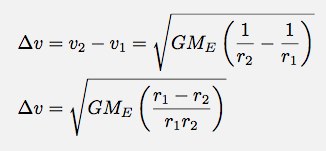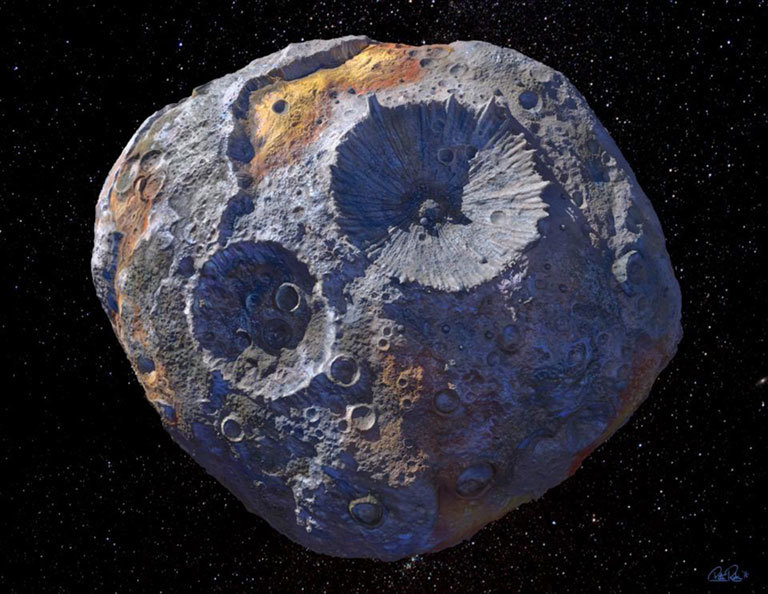Brandon Sanderson provides a lot of advice for how to world build. Long story short, the ideal is to construct an iceberg. The reader sees 10% of the detail. The other 90% we allude to. And if we are any good, that iceberg is actually hollow and we don't generate more detail than we actually need to support.
For my story open, I want a set of characters to blast off from city on the surface of 16 Psyche. I have already run into the problem of having to actually design the shuttlecraft. And part of the design of the shuttlecraft was devising a standard cargo contianer.. But for my next trick I have to look at who is moving cargo where and to why.
16 Psyche is the industrial heart of the ISTO. The asteroid is predominantly iron and nickel. Veins of material can be directly converted into Maraging steel with a very minimum of processing. This grade of steel has excellent machinability, high strength, and is able to work across a wide range of temperatures. Perfect for massive building projects and spacecraft structure.
There are three clusters of population on the asteroid.
Miners
The first is the workforce that mines the asteroid. These are the oldest settlements, and are located inside regions that have been hollowed out in the planet. Their settlements are inside massive rotating drums, which provide gravity.
Dusties
The second major population are the industrial workers who refine the raw material that the miners pull to the surface. This force has grown to include shipyard workers, consumer product makers, etc. These settlements are located in orbit around Psyche, around 90 km and up. Their settlements are at the end of long steel cables, and make use of the Psyche's low gravity and high rate of rotation http://localhost:8015/content/53d39806-e8c8-4ab8-a55d-d9e319e52711. Because these settlements are orbiting at or around the escape velocity for the planet, they make idea anchorages for interplanetary spacecraft.
A spreadsheet with the basic math is Here
Slickers
The large population and strategic importance of Psyche has led to the ISTO setting up both its Capital and its major military academy on Psyche. The settlement of New Franklin is located on the surface of the planet. It also serves as an important logistical hub between the miners below and industry above.
New Franklin was the first of the Project Perseus settlements. The design was inspired by previous mining settlements on Psyche, but enlarged. Each is 4 km in diameter, with an internal living area of 263 million square meters (101 square miles). They can support up to 32,000 inhabitants each. A similar design was adapted for settlements on Ceres and other minor planets.
A spreadsheet with the basic math is Here
Inside the hub of the rotating drum is a spaceport, as well as access to a rail based surface transport system. Over time the miners and dusties have moved their families into the urban colonies. New settlements are often located at the top of mining shafts or the base of anchorages.
Psyche Shipyards has many facilities where the graving yards are at anchorages, but the factories are on the surface. The anchorages contain short term living quarters, and workers commute to the surface on a weekly rotation. Launching even massive components into orbit is relatively simple given Psyche's low surface gravity.
While there is contant talk of setting up space elevators, every time the subject comes up someone points out how it would require a tremendous investment in materials that could otherwise be poured into ships and settlements.
The largest graving yard is located at PSY-004. This is the yard where "Franklin" class settlements are built. As the bulk of the mass for these colonies is actually the soil for agriculture and water, the are relatively easy to transport around the asteroid belt with minor tweaks to deltav, and sufficient lead time for the orbits to align. Cargo ships full of water and soil (and seeds and livestock) gradually fill the volume of the vessel over decades as the population expands and their needs increase.
Interplanetary Trade
While 16 Psyche is nice for settlements and industry, it is a nightmare for interplanetary commerce. Escape velocity is only 180 m/s. That means that the number of viable stable orbits for spacecraft are extremely limited. The irregular surface and high rotational speed make surface landings difficult for large craft. The low gravity actually creates a hassle for handling cargo. Just enough to make things interesting, but not enough to keep stacks of things stable, or even allow simple things like people to walk around.
To make the best use of the limited range of stable orbits, large vessels latch onto one of the planet's anchorages.
| Orbital Semi-Major Axis (km) |
Delta V (m/s) |
Orbital Velocity (m/s) |
Orbital Period (hour) |
Gravity (m/s/s) |
|

|
|||||
| Minor Axis Surface | 115 | 79.60441242200632 | 118.26403768134948 | 1.6971588989727244 | 0.12162071833648391 |
| Major Axis Surface | 140 | 61.96203800773106 | 107.18588659760334 | 2.2796480304961126 | 0.08206295918367346 |
| Low Transfer Orbit | 180 | 35.86396956280311 | 94.52906666440985 | 3.3234144421872314 | 0.04964302469135802 |
| Sub-Anchorage Orbit | 200 | 19.815394731299794 | 89.67814672482923 | 3.89242935037394 | 0.04021084999999999 |
| Anchorage Orbit | 210 | 0.0 | 87.46153515484836 | 4.195940533745551 | 0.03638020474847467 |
| Super-Anchorage Orbit | 220 | 18.397187156713382 | 85.50475797500181 | 4.490655777904322 | 0.03323210743801652 |
| High Transfer Orbit | 240 | 30.78492810304164 | 81.86457312741167 | 5.116731260867968 | 0.027924201388888886 |
| Interplanetary Transfer Orbit | 500 | 66.57816557733305 | 56.717439998645915 | 15.386177973089033 | 0.006433735999999999 |

Anchorage to Anchorage
Travel from Anchorage to Anchorage is achieved by either speeding up or slowing down. To keep transfer orbits somewhat sane, commuter and cargo flights are kept in a deltav range of +/- 30m/s using a pair of Hohman Transfer Orbits. The first takes the craft out orbit of the anchorage. The other restores the orbit back to the anchorage level, but at a point where the anchorage they are targeting will be.
| Δ Longitude | Hours |
| 30 | 0.2769512035156026 |
| 60 | 0.5539024070312052 |
| 90 | 0.8308536105468078 |
| 120 | 1.1078048140624104 |
| 150 | 1.3847560175780131 |
| 180 | 1.6617072210936157 |
| 210 | 1.9386584246092184 |
| 240 | 2.2156096281248208 |
| 270 | 2.4925608316404237 |
| 300 | 2.7695120351560263 |
| 330 | 3.046463238671629 |
A trip halfway across the anchorages (from 0 degrees to 180 degrees) would be 97 minutes long. Plus or minus, I'm not factoring in the burn time for the engines.
Anchorage to Surface
Trips from the Surface to an Anchorage, and vice verse are a little more varied. If the Anchorage is directly above the surface location, the trip is straight up and down. If there is a different in longitude, most trips will involve reaching the low transfer orbit from the surface, and then a second burn to reach your specific anchorage.
Surface to Surface
Trips from one point on the Surface to another is actually the most complex. Most starting points and destination are along the planet's equator. Long distance cargo flights involve boosting up to a low transfer orbit, and then blasting back down again. These are often called "POGOS" because the vessels basically point straight up and down for the entire flight.
Image Credits
- https://wikimedia.org/api/rest_v1/media/math/render/svg/84a962a4e5da8183f6a38ef23d0a5a9452667148
- https://wikimedia.org/api/rest_v1/media/math/render/svg/acc0794d19344d83b82ba93518c68a0fccd0b31b
- https://wikimedia.org/api/rest_v1/media/math/render/svg/c526bfa361f846f7f1debc98398bab142d3cb3e4
- https://upload.wikimedia.org/wikipedia/commons/d/df/Hohmann_transfer_orbit.svg?download
- https://skyandtelescope.org/wp-content/uploads/Asteroid_16_Psyche_-47191.jpeg